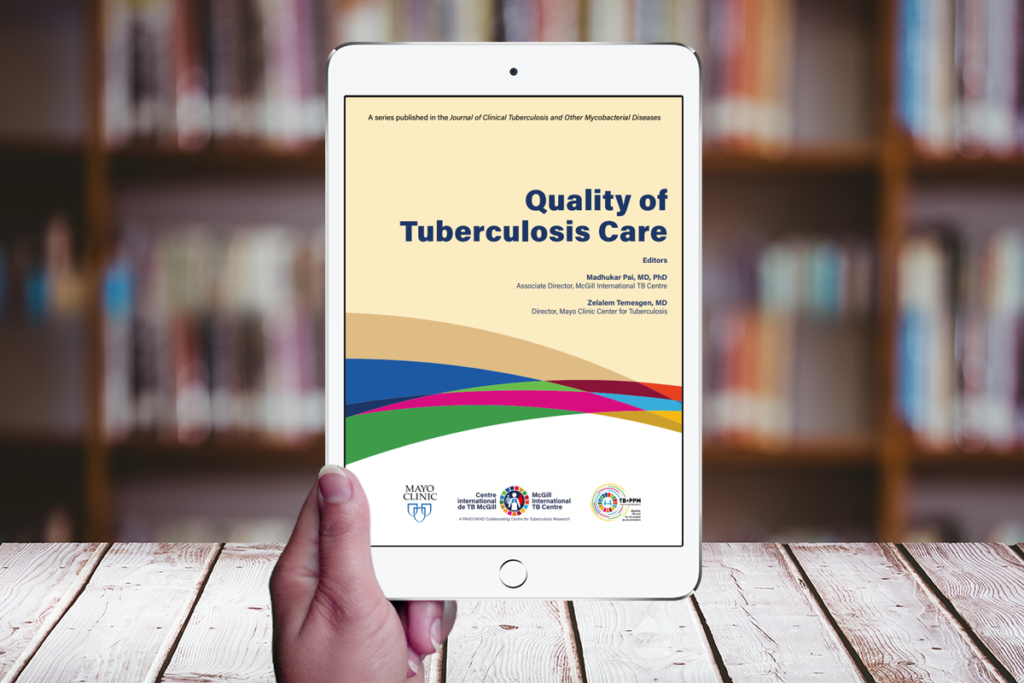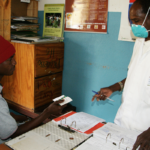The United Nations Secretary-General’s 2020 report on tuberculosis (TB) achievements presents ten priority recommendations to accelerate progress toward global TB targets. One of these recommendations is to advance universal health coverage so that all persons living with TB have access to affordable quality care. Much thought has gone into quality TB care, and Madhukar Pai and Zelalem Temesgen compile a series of journal articles to create a new e-book called Quality of Tuberculosis Care. The e-book offers commentaries and original research that cover different aspects of TB care quality, including approaches for measuring quality and interventions to improve it. The compilation presents a compelling case for the importance of addressing quality along the cascade of TB care in all settings. In this post, we offer a review of the e-book and focus our attention on three chapters that we find most useful to our TB program work which discuss prevention, private sector engagement and quality in a post-COVID-19 world, however that might look like.
Overview of the e-book
Among the e-book’s 21 chapters, the different contributors discuss important topics like addressing quality of care among key and vulnerable populations such as children and people living with HIV, the role of research and feasibility of quality improvement approaches, and how to identify and close gaps in quality of TB care. Pai and Temesgen take the reader through lessons learned from different perspectives, including perspectives from patients and providers in both public and private health care sectors, and they conclude the discussion by focusing on improving the quality of TB care in a post-pandemic world.
Prioritizing person-centered care can revolutionize TB efforts
The authors use components of the HQHS framework to explore the links between the implementation of TB prevention and control and patient safety, human resources for health, person-centered care, and trust in health systems as a way to refine tools used to measure implementation. They conclude that the framework emphasizes the importance of prioritizing the user experience as a component of high-quality care. The authors argue that this requires making person-centered care an essential part of reimagining TB prevention and control efforts, which can only be realized if patients and health workers who have been affected by TB contribute their perspectives.
As implementers, we know that a lack of resources for implementing effective, integrated programs is one of the challenges for national TB programs. Person-centered care can be a way of reimagining TB prevention and control efforts though. Implementers can pilot this innovative and efficient approach to maximize impact and use results to guide possible scale up.
Engaging private sector providers can help eliminate TB
Despite a disparate range of formal and informal private health care providers and services in many different resource and disease burden settings, the authors correctly assert that the many constraints have many commonalities and can all be overcome with sufficient commitment and investment. Indeed, the global TB community has long recognized the need to engage all care providers in efforts to eliminate TB, as shown by successive global TB strategies and plans to address TB, such as the Stop TB Strategy of 2006, the post-2015 End TB Strategy, and the current costed and updated “Global Plan to End TB 2018-2022: A paradigm shift”.
A critical milestone in this journey was the release in 2018 – by the World Health Organization (WHO), the Public-Private Mix of the Stop TB Partnership, and global partners – of a roadmap recommending ten actions at national and global levels to scale up the engagement of all care providers toward universal access to care. Public-private mix (PPM) approaches are important contributors to Pillar Two of the End TB Strategy (bold policies and supportive systems). Effectively done, PPM models of engagement have great potential to complement efforts to improve access to quality TB care along the care pathway.
Focusing on quality is even more important in a post-pandemic world
In the e-book’s final chapter, Jacob Bigio and colleagues summarize the key messages and actions for improving quality of TB care in a post-pandemic environment described throughout the previous chapters. The authors also touch on COVID-19’s devastating impact on the provision of TB services and highlight that most countries with a high TB burden were already struggling to meet global TB targets before the pandemic developed. The negative impact of COVID-19 on national responses toward TB elimination is well-documented. For example, WHO’s 2020 TB report notes substantial and sustained reductions in TB notifications over successive months in countries with a high TB burden, and a WHO technical report reports that 21% fewer people living with TB (approximately 1.4 million) received care in 2020 compared to 2019. The pandemic’s negative impact is now a sadly familiar statistic: TB progress could be set back a full decade.
Bigio and colleagues tell how COVID-19 exposed weak health care systems and created serious disruptions in service provision, restricting access to and lowering the quality of health care services in general and of TB care in particular. The fault lines exposed and magnified by COVID-19 highlight that quality improvement approaches on their own are insufficient to reverse the negative trends if the foundations, particularly at the primary care level, are weak. As efforts to strengthen these approaches continue, it is important to keep quality foremost in mind to ensure effective detection and successful treatment of all forms of TB in all people across all settings.
Our takeaways
Coming in the midst of the COVID-19 pandemic, this e-book is a timely reminder that the TB community must reimagine TB care and commit to renewed efforts to make universal health coverage a reality for all. Both reminders are fundamental in our move toward eliminating TB. The series of articles that Pai and Temesgen compiled from the Journal of Clinical Tuberculosis and Other Mycobacterial Diseases for this e-book are a valuable addition to the literature and definitely worth the read
Photo credits: Ydlabs, Creativeart and Basic Books



